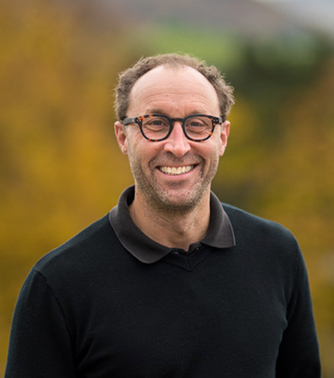Quantum sensing for biology and healthcare
6th March 2025
Timing : 1 pm ET
Please use this zoom link for joining the webinar
For a list of all talks at the NanoBio seminar Series Spring'25, see here
Single photon cameras can have very high temporal resolution and very high frame rates. This provides the opportunity for fluorescence lifetime imaging at unprecedented pixel resolution and frame rates for real time imaging of transient processes in biology such as Calcium or action potential waves in cardiomyocyte assays or neurons.
If we instead consider the light source – entangled photons provide the ability to probe the dynamics of photosensitive processes. When probing photo-activated biology or chemical processes, one must question whether the light source itself is affecting the dynamics under study. As an example, we look at the LH2-LH1 energy transfer dynamics in photosynthetic purple bacteria and changes when opening/closing the reaction centre. At the macroscopic scale, single photon technologies can be used to detect brain activation patterns. Despite the use of light to measure haemodynamic response in the brain since the 1980’s, it is still unclear exactly how light propagates through the head and if light can reach sub-cortical deeper regions. We show experimental results indicating that it is possible to transmit diametrically through the human head. A detailed numerical study reveals that light is guided around the head via a newly discovered diffusion-based guiding mechanism that then has implications for light guiding also at the neuron-scale. This connection between the micro (neuron) and macro (whole brain) scales is currently being investigated for the delivery of light deep into the brain for diagnostics and treatment of brain disorders.
Dr. Daniele Faccio
Professor in Quantum Technologies
Royal Academy of Engineering Chair in Emerging Technologies
Director of Research for the School of Physics & Astronomy
University of Glasgow
Daniele Faccio is a Royal Academy Chair in Emerging Technologies, Fellow of the Royal Society of Edinburgh and Cavaliere dell'Ordine della Stella d'Italia (Knight of the Order of the Star of Italy). He joined the University of Glasgow in 2017 as Professor in Quantum Technologies where he leads the Extreme-Light group and is Director of Research for the School of Physics and Astronomy. He is also adjunct professor at the University of Arizona, Tucson (USA) and fellow of the Optical Society of America. Previously he was at Heriot-Watt University and University of Insubria (Italy). He has been visiting scientist at MIT (USA), Marie-Curie fellow at ICFO, Barcelona (Spain) and EU-ERC fellow 2012 (StG) and 2023 (AdG). He was awarded the Philip Leverhulme Prize in Physics in 2015, the Royal Society of Edinburgh Senior Public Engagement medal and the Royal Society Wolfson Merit Award in 2017. He worked in the optical telecommunications industry for four years before obtaining his PhD in Physics in 2007 at the University of Nice-Sophia Antipolis (France). His research is funded by the UK research council EPSRC, DSTL, The Leverhulme Trust, the EU Horizon program and the Royal Academy of Engineering. He has worked on high intensity laser physics, optical analogues for black holes and gravity, optics in time-varying media and fundamentals of quantum mechanics. His research team currently focuses on quantum and computational techniques for imaging and sensing with a strong emphasis on healthcare for heart for brain.
Professor in Quantum Technologies
Royal Academy of Engineering Chair in Emerging Technologies
Director of Research for the School of Physics & Astronomy
University of Glasgow
Daniele Faccio is a Royal Academy Chair in Emerging Technologies, Fellow of the Royal Society of Edinburgh and Cavaliere dell'Ordine della Stella d'Italia (Knight of the Order of the Star of Italy). He joined the University of Glasgow in 2017 as Professor in Quantum Technologies where he leads the Extreme-Light group and is Director of Research for the School of Physics and Astronomy. He is also adjunct professor at the University of Arizona, Tucson (USA) and fellow of the Optical Society of America. Previously he was at Heriot-Watt University and University of Insubria (Italy). He has been visiting scientist at MIT (USA), Marie-Curie fellow at ICFO, Barcelona (Spain) and EU-ERC fellow 2012 (StG) and 2023 (AdG). He was awarded the Philip Leverhulme Prize in Physics in 2015, the Royal Society of Edinburgh Senior Public Engagement medal and the Royal Society Wolfson Merit Award in 2017. He worked in the optical telecommunications industry for four years before obtaining his PhD in Physics in 2007 at the University of Nice-Sophia Antipolis (France). His research is funded by the UK research council EPSRC, DSTL, The Leverhulme Trust, the EU Horizon program and the Royal Academy of Engineering. He has worked on high intensity laser physics, optical analogues for black holes and gravity, optics in time-varying media and fundamentals of quantum mechanics. His research team currently focuses on quantum and computational techniques for imaging and sensing with a strong emphasis on healthcare for heart for brain.
